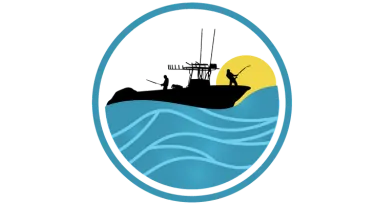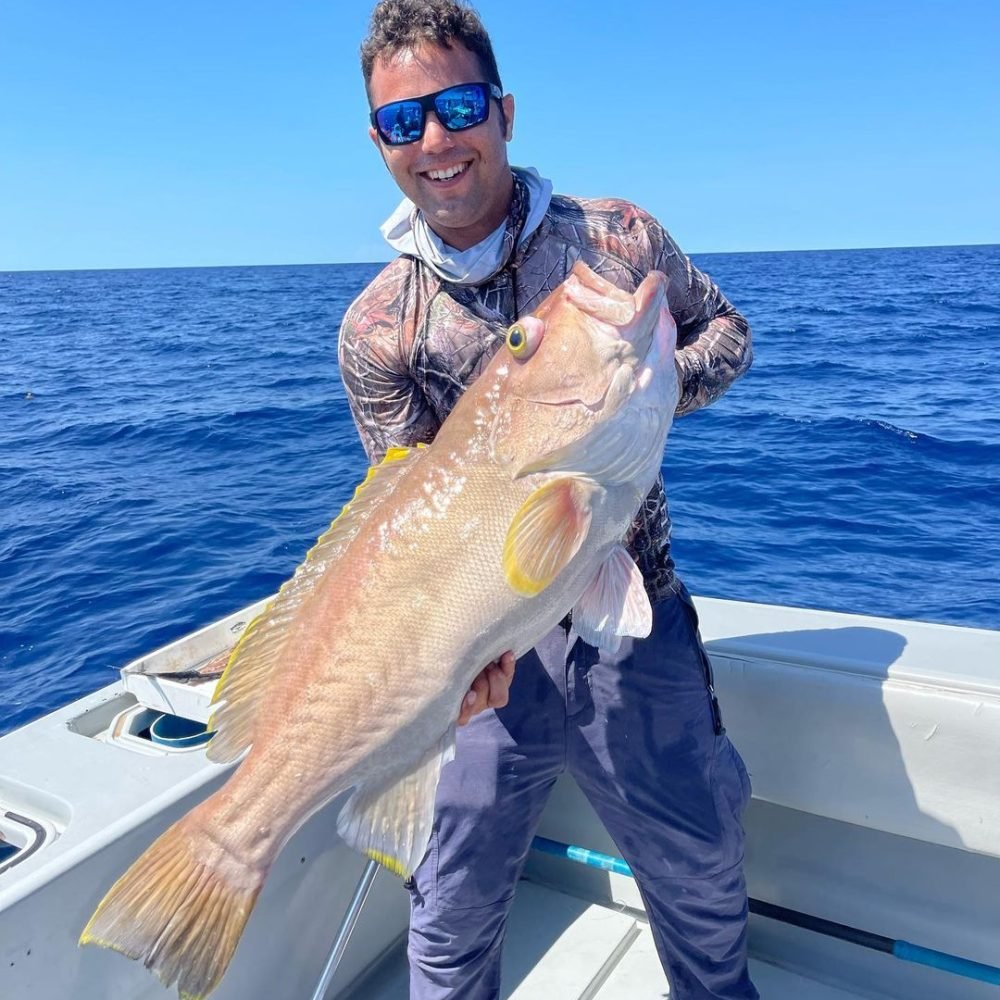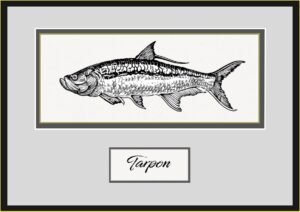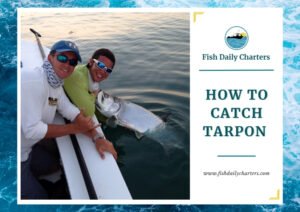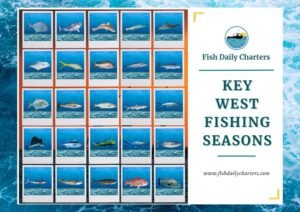Fishing enthusiasts often discuss the advantages of offshore and inshore fishing. Both types provide unique experiences and challenges. They are for different preferences and skill levels. They are both forms of saltwater fishing, but they offer very different adventures.
Understanding inshore and offshore fishing will help you choose the right fishing adventure. Matching your interests and skills. If you prefer a calm, scenic experience, inshore fishing might be your best bet. But if you’re looking for excitement and the chance to reel in a big catch, offshore fishing could be your ideal choice.
Use this guide to explore inshore and offshore fishing. Make sure you pick the perfect excursion for your next trip. Happy fishing!
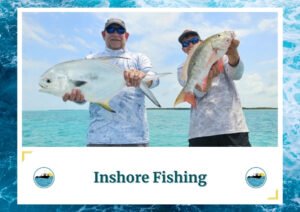
Inshore Fishing
Inshore fishing takes place close a few miles from the shore in waters less than 30 meters deep. This type of fishing is perfect for beginners and those seeking a more laid-back experience with calmer waters and smaller fish. Inshore fishing spots are easily accessible, and trips are shorter, ranging from a few hours to a half day.
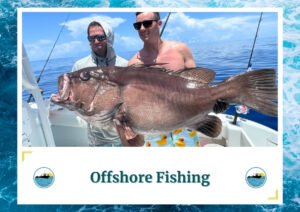
Offshore Fishing
Offshore fishing, on the flip side, takes place out in the deep water, away from the coast. This type of fishing is more challenging and requires specialized equipment and longer journeys. An offshore trip offers bigger catches and exhilarating open-ocean adventures. Powerful fish await anglers who venture far from shore. Offshore fishing is exciting and rewarding. It’s for seasoned anglers or thrill-seekers looking for adventure.
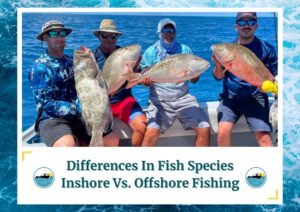
Differences in Fish Species Inshore Vs. Offshore Fishing
Inshore Fishing Target Species
Inshore fishing is all about catching smaller fish that live near the coast. You’ll often find anglers targeting species like:
- Redfish: Known for their hard fight and found in coastal waters with sandy or muddy bottoms.
- Snook: A popular game fish found in warm coastal regions, known for their aggressive strikes and acrobatic jumps.
- Trout: Often found in estuaries and bays, offering a fun and rewarding catch for anglers.
- Flounder: Bottom-dwelling fish are known for their delicious taste and unique flat shape.
- Sheepshead: Recognizable by their black and white stripes and strong teeth, often found around structures like piers and jetties.
Offshore Fishing Target Species
Offshore trips target larger and more powerful fish species that live in deep sea waters. Some of the most commonly sought-after species include:
- Yellowfin Tuna: Known for their incredible speed and strength, they are a prized catch for anglers.
- Blue Marlin: Sought after for their impressive size and acrobatic fights, they are often found in tropical and subtropical waters.
- Wahoo: Fast and strong fish that are often caught while trolling, known for their excellent flavor.
- Red Snapper: Found near underwater structures, these fish are highly valued for their firm and tasty meat.
- Grouper: Bottom dwellers that are challenging to catch and highly prized for their delicious flavor.
- Sailfish: Famous for their incredible speed and spectacular aerial displays during the fight.
- King Mackerel: Known for its strong fighting skills, typically found in deeper coastal waters.
- Amberjack: Strong fighters are often found around reefs and shipwrecks.
- Dorado (Mahi-Mahi): Noted for their striking colors and energetic confrontations, typically caught while trolling.
- Sharks: Reeling in different species, such as mako and hammerhead shark, offers an exhilarating challenge for anglers.
- Swordfish: Found in the depths of the ocean, these creatures are famous for their large size and incredible strength, often caught using deep-dropping techniques.
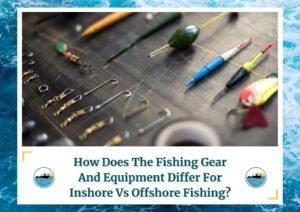
How Does the Fishing Gear and Equipment Differ for Inshore vs Offshore Fishing?
Inshore Fishing Gear
The equipment used for inshore fishing is typically lighter and more versatile compared to offshore fishing:
- Rods and Reels: Light to medium tackle, designed for smaller fish and easier handling.
- Line: Light lines, usually 10-20 lb test, are enough for the smaller species found inshore.
- Lures and Baits: Artificial lures, such as soft plastics and topwater plugs, as well as live bait like shrimp and small baitfish, are commonly used to attract inshore species.
Offshore Fishing Gear
The equipment used for an offshore fishing trip is stronger and specialized compared to inshore fishing:
- Rods and Reels: Heavy-duty tackle designed for big game fish. A 50-80 pound class rod with a high-capacity reel is typical.
- Lines: Heavy lines, often 50-100 lb test, to handle the strength of large fish.
- Lures and Baits: Large trolling lures, jigs, and live bait like sardines, mackerel, and squid.
- Terminal Tackle: Includes circle hooks, J-hooks, treble hooks, sinkers, weights, and heavy-duty swivels.
- Tools: Pliers, a landing net, a gaff, a tackle box, and a valid fishing license. A fish finder or GPS helps locate fish and navigate the waters.
- Safety Gear: Life jackets, first aid kits, and emergency signaling devices are essential for safety on the open sea.
- Optional Equipment: Fighting belts or harnesses for handling big fish, polarized sunglasses to reduce glare, and sunscreen and proper clothing for sun protection.

Boat Types Used for Inshore vs Offshore Fishing
Inshore Fishing Boats
The difference between inshore fishing boats and offshore fishing trips is they are typically smaller and designed for shallow waters:
- Flats Boats: Ideal for shallow water bay fishing and estuaries.
- Bay Boats: Slightly larger than flats boats, suitable for various inshore environments.
- Center Consoles: Versatile boats that are able to handle both nearshore and inshore waters.
- Kayaks and Canoes: Used for a more intimate and eco-friendly fishing experience in shallow waters.
Offshore Fishing Boats
Offshore fishing boats are larger and built to handle the open ocean’s challenging conditions:
- Sportfishing Yachts: Designed for long journeys and equipped with amenities for extended trips.
- Center Console Boats: Larger versions with powerful engines are great for offshore fishing.
- Convertible Boats: Combine luxury with functionality, featuring cabins and ample storage.
- Walkaround Boats: Offer both fishing capabilities and comfort, with cabins and sleeping quarters.
- Catamarans: Known for stability and a smooth ride due to their twin hulls.
- Express Boats: Sporty and powerful, designed for serious fishing outings with open cockpits and small cabins.
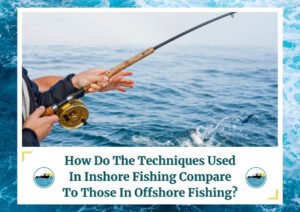
How Do the Techniques Used in Inshore Fishing Compare to Those in Offshore Fishing?
Inshore Fishing Techniques
Inshore fishing uses different techniques that are perfect for the shallow, calm waters:
- Casting: Throwing lures or bait near structures or vegetation to attract fish. Effective for species like snook and speckled trout.
- Drift Fishing: Allowing the boat to drift with the current while using bait or lures to cover a wide area. It is ideal for targeting species like redfish and flounder.
- Wade Fishing: Anglers fish while standing in shallow water, often near shorelines or flats. Allows for stealthy access to fish habitats.
- Sight Fishing: Spotting fish visually and casting directly to them. Requires good water clarity and calm conditions.
- Fly Fishing: A technique for catching certain inshore species, using a specialized fly rod and artificial fly to mimic the prey of specific fish.
Offshore Fishing Techniques
Offshore fishing uses many techniques. They target the diverse species found in deep sea waters:
- Trolling: Dragging lures or baited hooks behind a moving boat to attract fast-swimming fish like marlin, tuna, and wahoo.
- Bottom Fishing: Using weighted rigs to target species near the ocean floor, such as grouper and snapper.
- Jigging: Moving a weighted bait up and down in the water to attract fish like amberjack and Spanish mackerel.
- Live Bait: Live bait like sardines, mackerel, or squid attract larger predatory fish. This technique is used in combination with other techniques.
- Drift Fishing: Drifting with the current or wind while using baits or lures to cover a wide area, ideal for targeting species like tuna and kingfish.
- Deep Dropping: Lowering baits to a water depth of over 300 feet using heavy weights, targeting species like swordfish and tilefish.
- Kite Fishing: Using a kite to suspend bait at the surface, giving it a natural appearance and attracting surface-feeding fish like sailfish.
- Chunking: Chopping bait into pieces and casting them into the water to attract fish, commonly used to lure large schools of tuna.
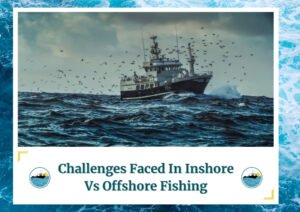
Challenges Faced in Inshore vs Offshore Fishing
Inshore Fishing Challenges
- Navigation: Maneuvering in shallow waters and avoiding obstacles like rocks and vegetation.
- Weather: Sudden changes in weather that impact water clarity and fish behavior.
- Fish Behavior: Inshore fish tend to be more skittish and need stealthy approaches.
Offshore Fishing Challenges
- Weather and Sea Conditions: Dealing with rough seas, strong currents, and unpredictable weather.
- Navigation: Long distances from shore need precise navigation and knowledge of the area.
- Equipment: Managing and maintaining heavy-duty equipment designed for large game fish.
- Physical Demands: Battling large, powerful fish is physically demanding and exhausting.
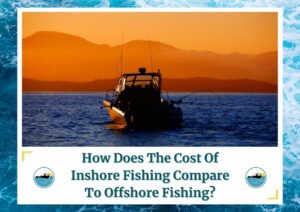
How Does the Cost of Inshore Fishing Compare to Offshore Fishing?
Inshore Fishing Costs
- Lower Fuel Costs: Shorter trips and less distance traveled mean lower fuel expenses.
- Equipment Costs: The light tackle and gear are generally less expensive.
- Charter Costs: Guided inshore trips are often more affordable than offshore charters.
- Maintenance: Smaller boats and simpler gear need less maintenance.
Offshore Fishing Costs
- Higher Fuel Costs: Longer distances travel, and larger boats use more fuel.
- Equipment Costs: Heavy-duty gear, strong tackle, and specialized equipment are more expensive.
- Charter Costs: Offshore charters are typically more costly due to the duration and resources required.
- Maintenance: Larger boats and complex equipment need more maintenance and upkeep.
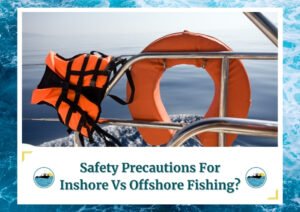
Safety Precautions for Inshore vs Offshore Fishing?
Inshore Fishing Safety
- Life Jackets: Essential for all passengers.
- Weather Awareness: Track weather conditions to avoid sudden storms.
- Communication: Carry a VHF radio or cell phone for emergencies.
- First Aid Kit: Basic first aid supplies for minor injuries.
Offshore Fishing Safety
- Life Jackets: These are mandatory for all passengers.
- EPIRB: Emergency Position Indicating Radio Beacon for long-distance trips.
- Satellite Phone: Reliable communication in remote areas.
- First Aid Kit: Comprehensive first aid supplies, including seasickness remedies.
- Safety Drills: Regular drills for man-overboard and emergency situations.
- Safety Gear: Flares, fire extinguishers, and emergency signaling devices.
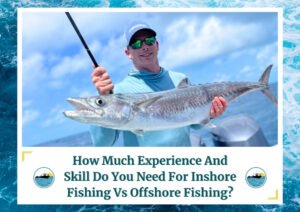
How Much Experience and Skill Do You Need for Inshore Fishing vs Offshore Fishing?
Inshore Fishing Experience and Skill Level
- Beginner-Friendly: Suitable for beginners and casual anglers.
- Techniques: Easier to learn and master.
- Physical Demands: Less physically demanding than offshore fishing.
- Trip Duration: Shorter trips, allowing for frequent practice and learning.
Offshore Fishing Experience and Skill Level
- Advanced Skills: Requires more experience and knowledge.
- Techniques: Complex techniques and equipment handling.
- Physical Demands: More physically demanding, with longer fights and rougher conditions.
- Trip Duration: Longer trips need stamina and endurance.
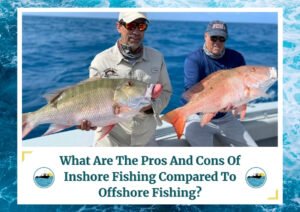
What Are the Pros and Cons of Inshore Fishing Compared to Offshore Fishing?
Inshore Fishing Pros
- Accessibility: Easier and quicker to access fishing spots.
- Cost: Generally lower costs for trips and equipment.
- Beginner-Friendly: Suitable for all skill levels.
- Calm Waters: More comfortable and safer for families and beginners.
Inshore Fishing Cons
- Smaller Fish: Targets smaller species, which may not appeal to trophy hunters.
- Limited Adventure: Less thrill compared to the open ocean experience.
Offshore Fishing Pros
- Larger Fish: Targets big game fish, offering a thrilling experience.
- Adventure: The excitement of the open ocean and challenging conditions.
- Diverse Species: Opportunities to catch a wide variety of large fish.
Offshore Fishing Cons
- Cost: Higher costs for trips and specialized equipment.
- Accessibility: Requires more travel time and preparation.
- Physical Demands: More physically demanding and challenging.
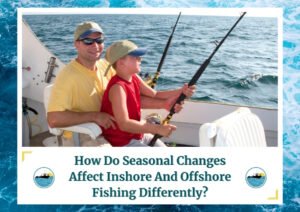
How Do Seasonal Changes Affect Inshore and Offshore Fishing Differently?
Inshore Fishing Seasonal Changes
- Spring and Summer: Warmer waters bring more activity and diverse species.
- Fall and Winter: Cooler temperatures reduce fish activity but offer unique opportunities for certain species.
Offshore Fishing Seasonal Changes
- Spring and Summer: Prime seasons for many species, with active migrations.
- Fall and Winter: Some species move to deeper waters, requiring longer trips to reach them.
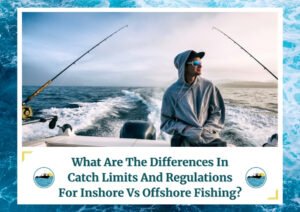
What Are the Differences in Catch Limits and Regulations for Inshore vs Offshore Fishing?
Inshore Fishing Regulations
- State Regulations: Often governed by state laws, with specific limits and seasons.
- Protected Areas: More common in coastal areas, requiring awareness of no-fishing zones.
- Size Limits: Regulations on the smallest and largest sizes of catchable fish.
Offshore Fishing Regulations
- Federal Regulations: Often governed by federal laws, especially in deep waters.
- Catch Limits: Strict limits on certain species to prevent overfishing.
- Seasonal Restrictions: Specific seasons for targeting certain species.
- Permits: Special permits may be required for certain types of fishing.

How Do Weather Conditions Impact Inshore Fishing vs Offshore Fishing?
Inshore Fishing Weather Impact
- Calm Waters: Generally less affected by weather, but storms disrupt fishing.
- Wind: Moderate winds still allow for productive fishing.
- Visibility: Clear water conditions are ideal for sight fishing.
Offshore Fishing Weather Impact
- Rough Seas: More susceptible to rough seas and strong currents.
- Storms: Severe weather poses significant risks and disrupts trips.
- Wind: Strong winds make fishing challenging and uncomfortable.
- Visibility: Clear skies and calm seas are ideal for spotting fish and navigation.
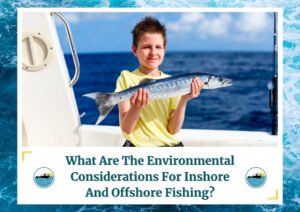
What Are the Environmental Considerations for Inshore and Offshore Fishing?
Inshore Fishing Environmental Considerations
- Habitat Protection: Remember to preserve fragile environments such as seagrass beds and mangroves. They are essential for keeping coastal ecosystems in balance.
- Pollution: Help cut pollution by safely getting rid of trash and fishing gear.
- Catch and Release: Practice responsible catch and release to keep fish populations healthy.
Offshore Fishing Environmental Considerations
- Overfishing: Make sure to follow the catch limits and regulations in place to avoid overfishing.
- Bycatch: Reduce bycatch by using appropriate gear and techniques.
- Marine Debris: Avoid leaving behind gear and tackle that will harm marine life.
- Eco-Friendly Practices: Use eco-friendly tackle and gear to minimize environmental impact.
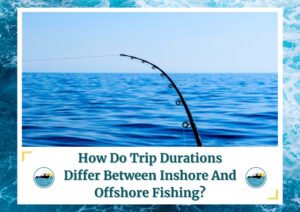
How Do Trip Durations Differ Between Inshore and Offshore Fishing?
Inshore Fishing Trip Durations
- Short Trips: Typically range from a few hours to half a day.
- Flexibility: Easy to fit into a busy schedule and ideal for spontaneous trips.
- Frequency: More frequent trips are possible due to shorter durations.
Offshore Fishing Trip Durations
- Long Trips: Often full-day or multi-day adventures.
- Preparation: Requires more preparation and planning.
- Extended Experience: Offers a comprehensive and immersive fishing experience.
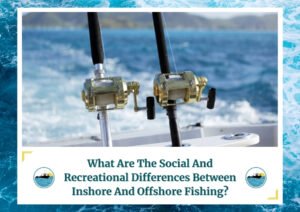
What Are the Social and Recreational Differences Between Inshore and Offshore Fishing?
Inshore Fishing Social and Recreational Aspects
- Family-Friendly: Ideal for families and large groups, with calmer waters and shorter trips.
- Relaxed Atmosphere: More relaxed and less physically demanding.
- Frequent Outings: It is easier to plan quick trips with friends and family.
Offshore Fishing Social and Recreational Aspects
- Adventure: Offers a sense of adventure and excitement.
- Group Bonding: Longer trips create opportunities for group bonding and teamwork.
- Shared Experience: The thrill of catching large fish creates memorable experiences.
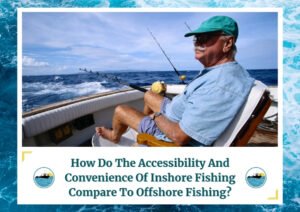
How Do the Accessibility and Convenience of Inshore Fishing Compare to Offshore Fishing?
Inshore Fishing Accessibility and Convenience
- Proximity: Closer to shore and easily accessible.
- Less Travel Time: Shorter travel times to fishing spots.
- Simpler Preparation: Requires less gear and preparation.
Offshore Fishing Accessibility and Convenience
- Distance: Requires traveling further from shore.
- Longer Travel Time: More time is needed to reach fishing grounds.
- Complex Preparation: Involves more gear, planning, and logistics.

How Do Inshore and Offshore Fishing Impact Local Economies Differently?
Inshore Fishing Economic Impact
- Local Businesses: Supports local bait shops, boat rentals, and guide services.
- Tourism: Attracts tourists for short fishing trips and related fishing activities.
- Community Engagement: Promotes community involvement and local events.
Offshore Fishing Economic Impact
- Charter Services: Drives business for charter operators and larger boat services.
- Equipment Sales: Boosts sales of specialized offshore gear and tackle.
- Extended Tourism: Encourages longer stays and increased spending on accommodations and dining.
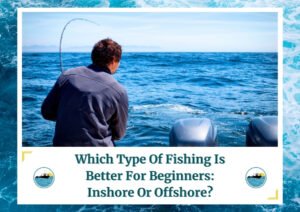
Which Type of Fishing is Better for Beginners: Inshore or Offshore?
Inshore Fishing for Beginners
- Beginner-Friendly: Easier techniques and lighter gear make it accessible for novices.
- Short Trips: Shorter durations are less physically demanding.
- Calm Waters: Safer and more comfortable for those new to fishing.
Offshore Fishing for Beginners
- Guided Charters: Beginners still enjoy offshore fishing with experienced guides.
- Learning Experience: Offers the opportunity to learn advanced techniques and handle bigger fish.
- Adventure: Provides a thrilling introduction to the world of big game fishing.
Conclusion
Deciding between inshore and offshore fishing comes down to what you want from your trip. Inshore fishing is great for new fishers and families. It is also good for anyone who wants a laid-back and easy experience. On the other hand, an offshore fishing trip is for thrill-seekers and experienced anglers. They seek bigger catches and more excitement.
You might like the calm, productive waters of inshore fishing. Or, go for adventurous, deep-sea fishing offshore. Fishing Daily Charters offers charter fishing trips personalized to your needs. Our experienced captains and well-equipped boats create a memorable and successful fishing experience. Book your next charter fishing trip, inshore or offshore, with us today. Then, have an unforgettable adventure on the water.
